Articles
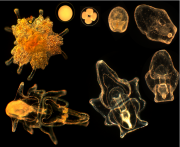
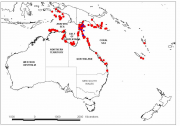
Within a funding structure such as NERP TE, 'governance' is often described within the narrow framework of program roles and responsibilities. However there are benefits of considering the broader system of governance that such programs sit in, and in ensuring that each phase within the program cycle contributes to good governance outcomes. This broader idea of governance represents "the way society gets things done".
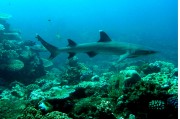
On the Great Barrier Reef sharks are readily identified as fearsome predators. In ecological theory, species that are at the top of the food chain are commonly described as apex predators. However generalising all sharks as apex predators is misleading and may lead to poor outcomes in the context of managing coral reefs and sharks for conservation.
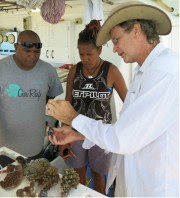
During trips to Torres Strait in collaboration with TSRA in 2013 and 2014 coral skeletons were collected under a permit issued by the Commonwealth of Australia under the Torres Strait Fisheries Act 1998. The permit specified the collection of small pieces of the coral skeleton for identification purposes.
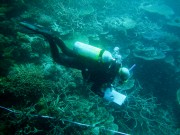
The Great Barrier Reef (GBR) has great economic importance as well as immense aesthetic value, contributing an estimated $5.8 billion to the Australian economy, principally through tourism, and commercial and recreational fisheries. Inscription on the World Heritage List recognises the area's global significance and entails regular reporting on its status. Coral reefs are always changing through natural processes such as recruitment, growth, mortality and disturbance by storms. Information about natural variability of populations is essential for informed management.
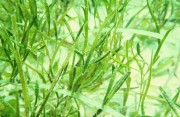
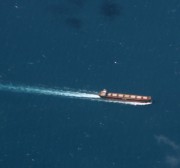

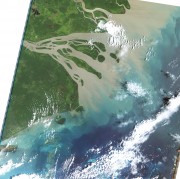
The Torres Strait marine environment contains a relatively shallow (<20m) and highly productive stretch of seawater between the tip of Queensland and Papua New Guinea. It straddles the juncture of the Indian Ocean (Arafura sea) with the Pacific Ocean (Coral Sea), resulting in complex patterns of influence from the two ocean systems, including complicated tides and currents, and high biodiversity. Torres Strait contains over 100 islands, and a diversity of marine habitats including coral reefs, seagrass meadows, and rich benthic garden communities.
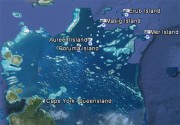
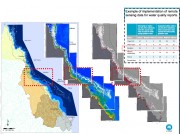

Introduction
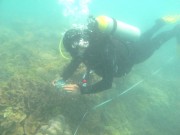
Coral reefs in the coastal and inshore zones of the Great Barrier Reef (GBR) are highly valued for recreation and local tourism, but their proximity to land exposes these reefs to land runoff carrying excess amounts of fine sediments and nutrients from developed catchments. The land management initiatives under the Australian and Queensland Government's Reef Water Quality Protection Plan 2013 (Reef Plan) are key tools to improve the water quality entering the GBR and will, in the long-term, improve the environmental conditions for inshore coral reefs. Long-term monitoring of 32 inshore reefs (Figure 1) is part of the Reef Plan and is fundamental to determine the condition of inshore coral reefs and long-term trends related to Reef Plan’s actions on the catchment.
The condition of coral communities on inshore reefs of the GBR has been in a state of decline in recent years. The ninth MMP inshore coral reef survey completed in 2013 demonstrated the halting and reversal of these declines in all regions with the exception of the Fitzroy Region (Figure 2). Observed declines in coral community composition can be attributed to exposure to extreme weather events, including tropical cyclones and flooding in combination with responses to chronic environmental stress. The return to more moderate levels of runoff in 2013 and a lack of cyclone damage has allowed coral communities to begin to recover. Severe flooding in the Fitzroy Region again in 2013 has ensured the continued very poor condition of corals in that region.


There is an updated version of the details of this part of the MMP monitoring program.

TRaCK (Tropical Rivers and Coastal Knowledge) is a research hub which has drawn together more than 70 of Australia's leading social, cultural, environmental and economic researchers. Our research focuses on the tropical north of Australia from Cape York to Broome.
The TRaCK Digital Atlas has been developed to provide a durable and centralised metadata repository for all of TRaCK’s significant intellectual output. All the mapping layers from the TRaCK Digital Atlas are now available in the e-Atlas mapping system.
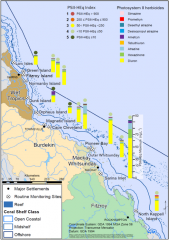
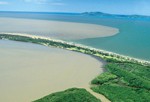
As part of its commitment under Theme 5 of the MTSRF, the Reef and Rainforest Research Centre publishes, or makes available, outputs (e.g. final technical or scientific reports, synthesis reports) from MTSRF-funded research projects nested within Research Themes 1-4.
This report provides an overview of the key findings of research conducted through the Marine and Tropical Sciences Research Facility (MTSRF) designed to improve our understanding of the linkages between catchment and reef processes, and how the quality of water from paddock, sub-catchment, catchment and marine systems can directly and indirectly influence the ecological functioning of the Great Barrier Reef (GBR). The research aimed to inform and facilitate management action and remediation to reduce, restore and increase resilience of the inshore GBR ecosystems. The research findings are also applicable elsewhere, particularly in tropical ecosystems, but many outcomes can be translated for broader application in catchment and marine ecosystem management.



